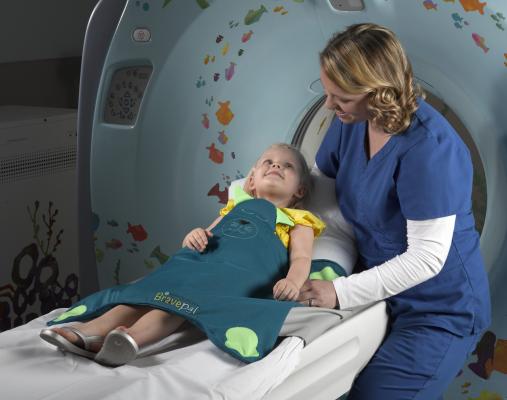
July 14, 2016 — Alternative imaging procedures, radiation safety and parent education should be the top priorities when considering performing computed tomography (CT) procedures on pediatric patients, according to a literature review published in the scientific journal Radiologic Technology. Among the best practices covered are the importance of education, use of traditional and bismuth shielding and radiologists’ review of examination requisitions.
Researchers from Shawnee State University and Midwestern State University reviewed dozens of peer-reviewed journal articles published within the past 10 years along with Web-based information about CT and its effects on pediatric and adult patients. Their goal was to identify methods for minimizing ionizing radiation dose during pediatric CT examinations.
Their research is timely, as 4-7 million CT procedures are performed on children each year, but the number has declined in recent years because of concerns about the risks associated with radiation exposure on children. According to the authors, the as low as reasonably achievable principle and Image Gently campaign have helped create awareness about the need to minimize dose when using CT in pediatric imaging exams.
The importance of minimizing risk was a key finding in the researchers’ literature review. Substituting CT scans with magnetic resonance (MR) and ultrasound procedures should always be considered, as they do not use ionizing radiation. Radiologists working alongside the referring physician can collaborate to determine if MR or ultrasound is more appropriate depending on the case.
According to Kristina Darnell, M.S., R.T.(R)(CT)(MR), co-author of the study, substitution practices are gaining traction in the medical imaging community. “Programs like the Image Gently campaign have helped raise awareness about keeping dose as low as possible, especially when working with pediatric patients. These kinds of campaigns appear to be effective in educating the medical community about the importance of considering alternative imaging procedures such as MRI or ultrasound.”
Shielding also can be used during CT procedures; however, the authors report that it is not always standard protocol in CT departments. Bismuth shields were specifically developed for CT, as they decrease the surface dose to radiosensitive areas by absorbing the low-energy X-rays while allowing the beam to pass through and produce a diagnostic image. Studies have found the dose reduction in radiation-sensitive areas to range from 18 to 74 percent when bismuth shields are used.
Yet bismuth shielding remains controversial as its effect on image quality has been questioned, and the Association of Physicists in Medicine has endorsed methods other than bismuth shielding to reduce radiation during CT examinations. The study recommends that technologists must ensure that shields are positioned properly and used in conjunction with other dose-reduction methods to provide optimal image quality and the best patient care possible.
Educating parents about CT also is an essential safety component, added the authors. Parents sometimes do not understand what is involved in their child’s radiology examination or the risks associated with it. When radiologists or pediatricians discuss an examination with parents, they help parents become fully informed while showing respect for their autonomy.
“In CT, as in all facets of healthcare, increased communication with patients and parents results in improved patient cooperation, better quality studies and a reduction in radiation exposure,” said Gary Morrison, M.Ed., R.T.(R), a co-author of the study.
The study authors recommend that imaging professionals use appropriate CT parameters and parent and provider education to ensure pediatric patients undergo safe CT examinations. In addition, they believe further research is needed on the effectiveness of bismuth shielding and other technical factors that can be modified to lower dose.
For more information: www.radiologictechnology.org


 December 10, 2025
December 10, 2025 









